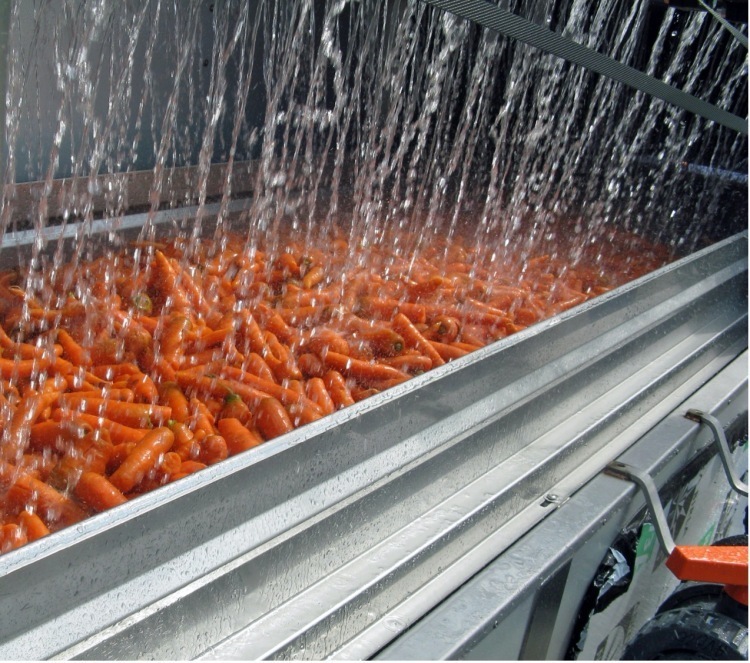In Summary
- Pre- and postharvest measures to control microbial food safety can be divided into three themes; cultural practice, equipment intervention, and chemical/physical intervention.
- An example of a postharvest measure is hydrocooling, which is used to quickly cool down produce via applying water to help extend shelf life.
- Water used for hydrocooling should be ideally potable, recycled with fresh water as frequently as possible, and monitored for microbial quality.
Pre and postharvest preventative measures
Gil et al. (2015) have reviewed pre- and postharvest preventive measures and intervention strategies to control microbial food safety hazards of fresh leafy vegetables. The review groups intervention strategies into three themes which were:
- Managerial interventions, which referred to the creation of a culture of food safety and the implementation of preventive control strategies, driven from the top-down by senior managers.
- Equipment interventions referring to tools and utensils used for the interventions.
- Chemical and physical interventions, which are treatments designed to decontaminate produce, workers and equipment.

In addition, the Gil review continues past harvest to discuss the relatively risky hydrocooling (the removal of field heat from crops and slowing of cellular metabolism). The process uses water to cool the crops (Figure 1) and helps to extend the shelf life (Silva Moriera, 2019). Ideally, potable water of high microbiological quality should be used for hydrocooling because the water is applied directly onto the crop, close to the sale of the crop (Gil et al., 2015). However, it is recognised that water is recycled in hydrocoolers from 1-7 days prior to replacement and consequently subject to potential contamination by pathogens. If that is the unavoidable situation, the water used in hydrocoolers should be routinely monitored for microbial quality and ideally treated to ensure water quality is maintained within acceptable standards. The alternative practices of vacuum cooling and forced air cooling are less risky, although any air used for cooling should be filtered before use (Gil et al 2015).